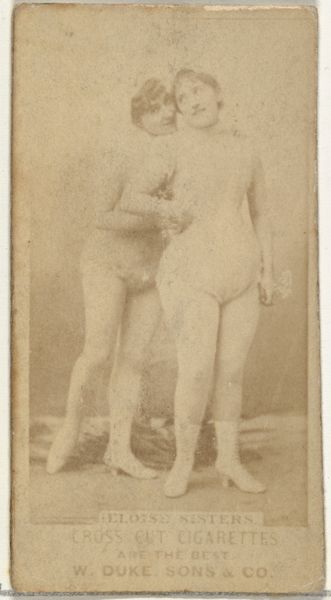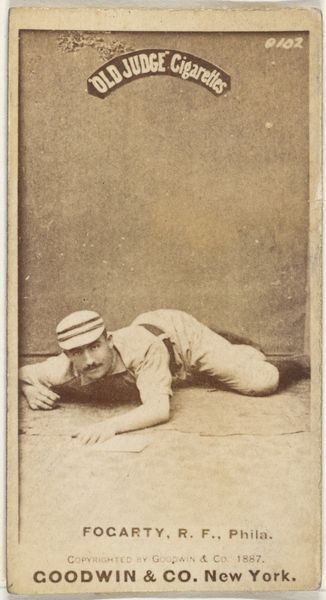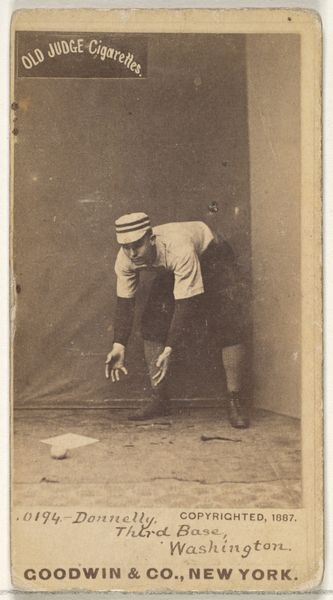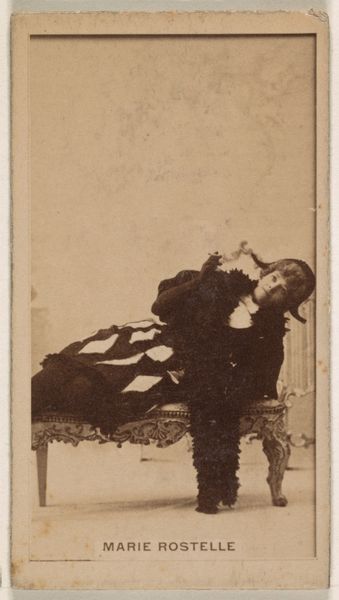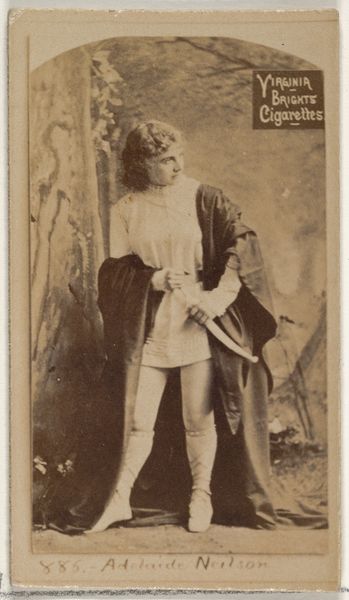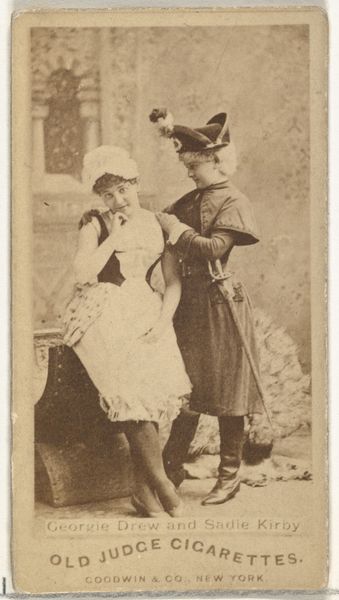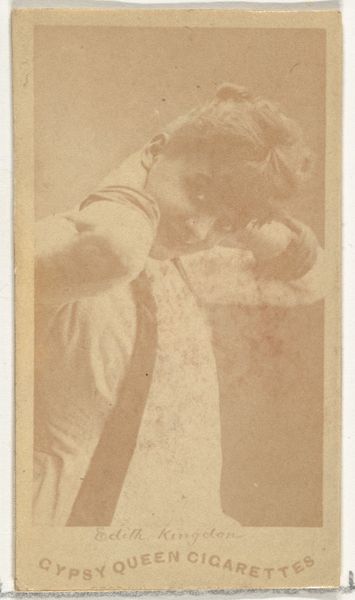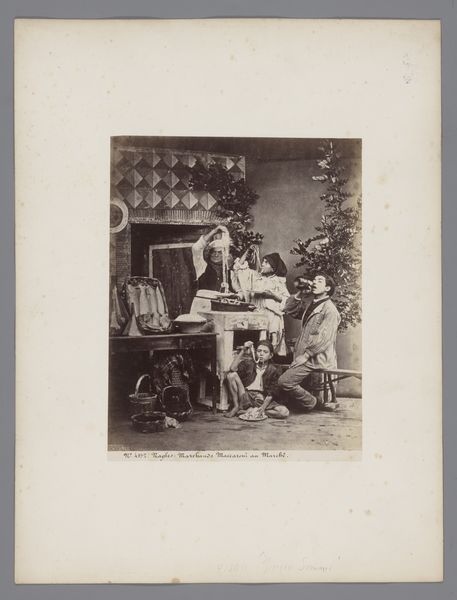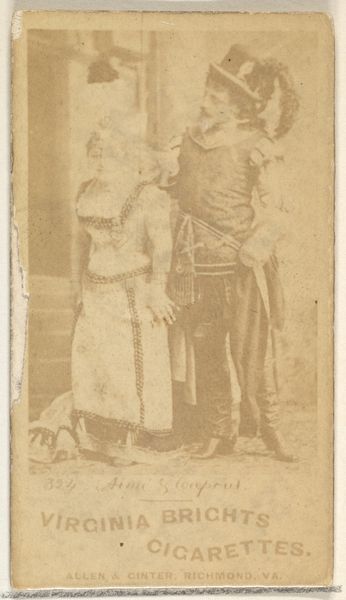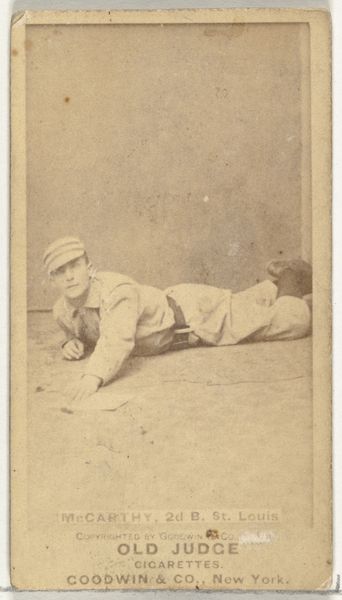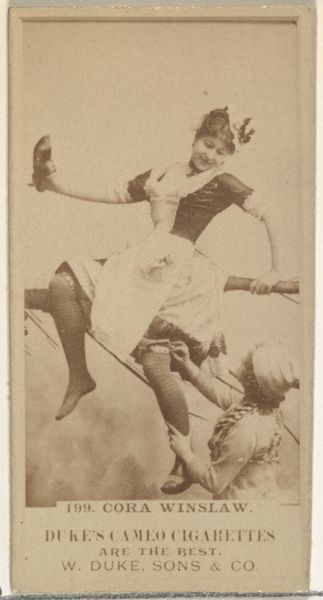![[Edward Everett Hale and Son] by James Wallace Black](/_next/image?url=https%3A%2F%2Fd2w8kbdekdi1gv.cloudfront.net%2FeyJidWNrZXQiOiAiYXJ0ZXJhLWltYWdlcy1idWNrZXQiLCAia2V5IjogImFydHdvcmtzLzY2YjJjN2Q2LWQyNjAtNGE4ZS04NzNkLTdmOTc0MjM1YWYzOS82NmIyYzdkNi1kMjYwLTRhOGUtODczZC03Zjk3NDIzNWFmMzlfZnVsbC5qcGciLCAiZWRpdHMiOiB7InJlc2l6ZSI6IHsid2lkdGgiOiAxOTIwLCAiaGVpZ2h0IjogMTkyMCwgImZpdCI6ICJpbnNpZGUifX19&w=3840&q=75)
plein-air, daguerreotype, photography, gelatin-silver-print, albumen-print
#
portrait
#
plein-air
#
daguerreotype
#
photography
#
gelatin-silver-print
#
19th century
#
albumen-print
Dimensions: Image (2005.100.1031): 8.9 × 5.9 cm (3 1/2 × 2 5/16 in.) Mount (2005.100.1031): 10.7 × 6.3 cm (4 3/16 × 2 1/2 in.)
Copyright: Public Domain
Curator: So, we are observing this captivating albumen print, entitled "[Edward Everett Hale and Son]" made by James Wallace Black between 1863 and 1867. Editor: Right! It’s an image of a man and a young boy using some kind of pushing device. What immediately strikes me is the intimate nature of the image, but the presence of this… tool? seems strange. How do you interpret this work, thinking about it materially and socially? Curator: The use of albumen printing here is interesting. This process, popularized during this period, relies heavily on the availability and consistency of egg whites. Considering albumen’s high sheen, is this luminosity attempting to elevate the status of what might otherwise be seen as just a middle-class domestic scene? Also, what kind of labor and resources went into creating this seemingly simple photograph? Editor: That's a great point about the egg whites and resources. I didn’t think about it, but the act of creating a print, involving chemistry, skilled labor, and resources, indeed impacts its meaning. Does the subject matter of domestic life contrast the work of the studio to portray it, would you say? Curator: Exactly! How does that relationship comment on the industrialization that characterized 19th-century America, even entering family space? What is the societal function of this “family portrait” that features what appears to be some kind of physical therapy? I wonder if it is a statement about class and material wealth, perhaps even access to health, rather than mere preservation. Editor: It’s a photograph but also functions almost like a display of prosperity through means beyond purely financial wealth. The physical interaction within this seemingly private space raises numerous questions. Curator: Considering the constraints of the photographic materials themselves, Black's choice to represent this subject matter pushes against the traditional understanding of fine art as being divorced from labor and materials. The subject becomes almost secondary to the medium itself. Editor: This has provided a whole new lens through which to view the photograph! Focusing on production helps me think critically about labor, access, and industrial contexts of image-making. Thanks! Curator: Indeed. Thinking through material conditions has the power to make even everyday photographs surprisingly resonant.
Comments
No comments
Be the first to comment and join the conversation on the ultimate creative platform.
